Guanglin Niu
IFEvalCode: Controlled Code Generation
Jul 30, 2025Abstract:Code large language models (Code LLMs) have made significant progress in code generation by translating natural language descriptions into functional code; however, real-world applications often demand stricter adherence to detailed requirements such as coding style, line count, and structural constraints, beyond mere correctness. To address this, the paper introduces forward and backward constraints generation to improve the instruction-following capabilities of Code LLMs in controlled code generation, ensuring outputs align more closely with human-defined guidelines. The authors further present IFEvalCode, a multilingual benchmark comprising 1.6K test samples across seven programming languages (Python, Java, JavaScript, TypeScript, Shell, C++, and C#), with each sample featuring both Chinese and English queries. Unlike existing benchmarks, IFEvalCode decouples evaluation into two metrics: correctness (Corr.) and instruction-following (Instr.), enabling a more nuanced assessment. Experiments on over 40 LLMs reveal that closed-source models outperform open-source ones in controllable code generation and highlight a significant gap between the models' ability to generate correct code versus code that precisely follows instructions.
Neighbor-Based Feature and Index Enhancement for Person Re-Identification
Apr 16, 2025Abstract:Person re-identification (Re-ID) aims to match the same pedestrian in a large gallery with different cameras and views. Enhancing the robustness of the extracted feature representations is a main challenge in Re-ID. Existing methods usually improve feature representation by improving model architecture, but most methods ignore the potential contextual information, which limits the effectiveness of feature representation and retrieval performance. Neighborhood information, especially the potential information of multi-order neighborhoods, can effectively enrich feature expression and improve retrieval accuracy, but this has not been fully explored in existing research. Therefore, we propose a novel model DMON-ARO that leverages latent neighborhood information to enhance both feature representation and index performance. Our approach is built on two complementary modules: Dynamic Multi-Order Neighbor Modeling (DMON) and Asymmetric Relationship Optimization (ARO). The DMON module dynamically aggregates multi-order neighbor relationships, allowing it to capture richer contextual information and enhance feature representation through adaptive neighborhood modeling. Meanwhile, ARO refines the distance matrix by optimizing query-to-gallery relationships, improving the index accuracy. Extensive experiments on three benchmark datasets demonstrate that our approach achieves performance improvements against baseline models, which illustrate the effectiveness of our model. Specifically, our model demonstrates improvements in Rank-1 accuracy and mAP. Moreover, this method can also be directly extended to other re-identification tasks.
From Poses to Identity: Training-Free Person Re-Identification via Feature Centralization
Mar 02, 2025



Abstract:Person re-identification (ReID) aims to extract accurate identity representation features. However, during feature extraction, individual samples are inevitably affected by noise (background, occlusions, and model limitations). Considering that features from the same identity follow a normal distribution around identity centers after training, we propose a Training-Free Feature Centralization ReID framework (Pose2ID) by aggregating the same identity features to reduce individual noise and enhance the stability of identity representation, which preserves the feature's original distribution for following strategies such as re-ranking. Specifically, to obtain samples of the same identity, we introduce two components:Identity-Guided Pedestrian Generation: by leveraging identity features to guide the generation process, we obtain high-quality images with diverse poses, ensuring identity consistency even in complex scenarios such as infrared, and occlusion.Neighbor Feature Centralization: it explores each sample's potential positive samples from its neighborhood. Experiments demonstrate that our generative model exhibits strong generalization capabilities and maintains high identity consistency. With the Feature Centralization framework, we achieve impressive performance even with an ImageNet pre-trained model without ReID training, reaching mAP/Rank-1 of 52.81/78.92 on Market1501. Moreover, our method sets new state-of-the-art results across standard, cross-modality, and occluded ReID tasks, showcasing strong adaptability.
Diffusion-based Hierarchical Negative Sampling for Multimodal Knowledge Graph Completion
Jan 26, 2025Abstract:Multimodal Knowledge Graph Completion (MMKGC) aims to address the critical issue of missing knowledge in multimodal knowledge graphs (MMKGs) for their better applications. However, both the previous MMGKC and negative sampling (NS) approaches ignore the employment of multimodal information to generate diverse and high-quality negative triples from various semantic levels and hardness levels, thereby limiting the effectiveness of training MMKGC models. Thus, we propose a novel Diffusion-based Hierarchical Negative Sampling (DHNS) scheme tailored for MMKGC tasks, which tackles the challenge of generating high-quality negative triples by leveraging a Diffusion-based Hierarchical Embedding Generation (DiffHEG) that progressively conditions on entities and relations as well as multimodal semantics. Furthermore, we develop a Negative Triple-Adaptive Training (NTAT) strategy that dynamically adjusts training margins associated with the hardness level of the synthesized negative triples, facilitating a more robust and effective learning procedure to distinguish between positive and negative triples. Extensive experiments on three MMKGC benchmark datasets demonstrate that our framework outperforms several state-of-the-art MMKGC models and negative sampling techniques, illustrating the effectiveness of our DHNS for training MMKGC models. The source codes and datasets of this paper are available at https://github.com/ngl567/DHNS.
Identity-aware Feature Decoupling Learning for Clothing-change Person Re-identification
Jan 10, 2025Abstract:Clothing-change person re-identification (CC Re-ID) has attracted increasing attention in recent years due to its application prospect. Most existing works struggle to adequately extract the ID-related information from the original RGB images. In this paper, we propose an Identity-aware Feature Decoupling (IFD) learning framework to mine identity-related features. Particularly, IFD exploits a dual stream architecture that consists of a main stream and an attention stream. The attention stream takes the clothing-masked images as inputs and derives the identity attention weights for effectively transferring the spatial knowledge to the main stream and highlighting the regions with abundant identity-related information. To eliminate the semantic gap between the inputs of two streams, we propose a clothing bias diminishing module specific to the main stream to regularize the features of clothing-relevant regions. Extensive experimental results demonstrate that our framework outperforms other baseline models on several widely-used CC Re-ID datasets.
MdEval: Massively Multilingual Code Debugging
Nov 04, 2024



Abstract:Code large language models (LLMs) have made significant progress in code debugging by directly generating the correct code based on the buggy code snippet. Programming benchmarks, typically consisting of buggy code snippet and their associated test cases, are used to assess the debugging capabilities of LLMs. However, many existing benchmarks primarily focus on Python and are often limited in terms of language diversity (e.g., DebugBench and DebugEval). To advance the field of multilingual debugging with LLMs, we propose the first massively multilingual debugging benchmark, which includes 3.6K test samples of 18 programming languages and covers the automated program repair (APR) task, the code review (CR) task, and the bug identification (BI) task. Further, we introduce the debugging instruction corpora MDEVAL-INSTRUCT by injecting bugs into the correct multilingual queries and solutions (xDebugGen). Further, a multilingual debugger xDebugCoder trained on MDEVAL-INSTRUCT as a strong baseline specifically to handle the bugs of a wide range of programming languages (e.g. "Missing Mut" in language Rust and "Misused Macro Definition" in language C). Our extensive experiments on MDEVAL reveal a notable performance gap between open-source models and closed-source LLMs (e.g., GPT and Claude series), highlighting huge room for improvement in multilingual code debugging scenarios.
CCUP: A Controllable Synthetic Data Generation Pipeline for Pretraining Cloth-Changing Person Re-Identification Models
Oct 17, 2024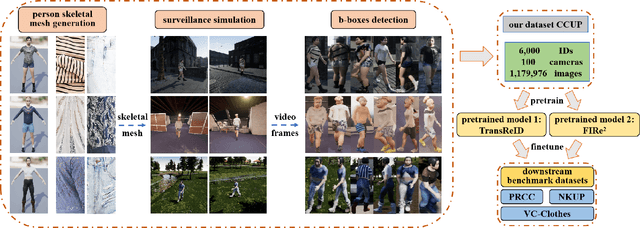
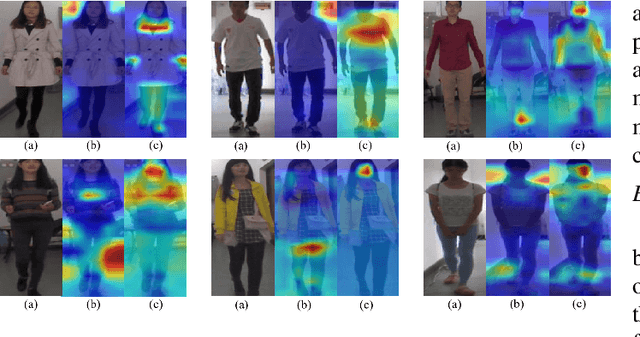
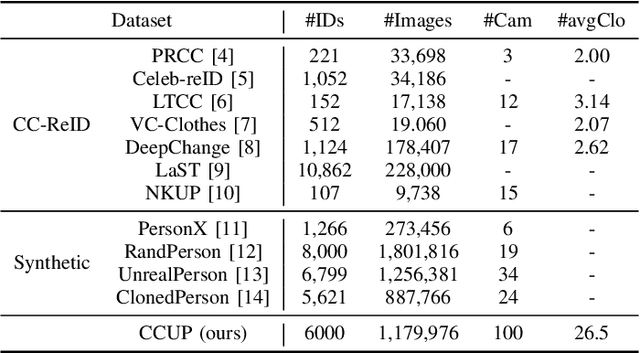
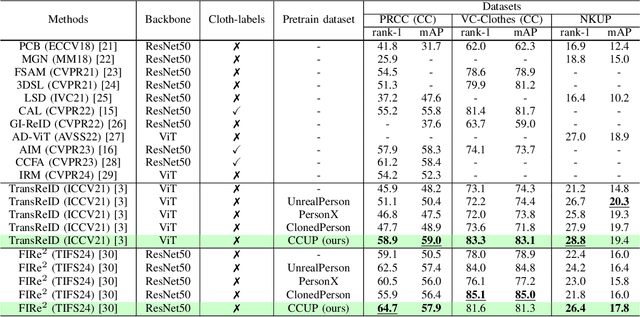
Abstract:Cloth-changing person re-identification (CC-ReID), also known as Long-Term Person Re-Identification (LT-ReID) is a critical and challenging research topic in computer vision that has recently garnered significant attention. However, due to the high cost of constructing CC-ReID data, the existing data-driven models are hard to train efficiently on limited data, causing overfitting issue. To address this challenge, we propose a low-cost and efficient pipeline for generating controllable and high-quality synthetic data simulating the surveillance of real scenarios specific to the CC-ReID task. Particularly, we construct a new self-annotated CC-ReID dataset named Cloth-Changing Unreal Person (CCUP), containing 6,000 IDs, 1,179,976 images, 100 cameras, and 26.5 outfits per individual. Based on this large-scale dataset, we introduce an effective and scalable pretrain-finetune framework for enhancing the generalization capabilities of the traditional CC-ReID models. The extensive experiments demonstrate that two typical models namely TransReID and FIRe^2, when integrated into our framework, outperform other state-of-the-art models after pretraining on CCUP and finetuning on the benchmarks such as PRCC, VC-Clothes and NKUP. The CCUP is available at: https://github.com/yjzhao1019/CCUP.
Knowledge Graph Embeddings: A Comprehensive Survey on Capturing Relation Properties
Oct 16, 2024Abstract:Knowledge Graph Embedding (KGE) techniques play a pivotal role in transforming symbolic Knowledge Graphs (KGs) into numerical representations, thereby enhancing various deep learning models for knowledge-augmented applications. Unlike entities, relations in KGs are the carriers of semantic meaning, and their accurate modeling is crucial for the performance of KGE models. Firstly, we address the complex mapping properties inherent in relations, such as one-to-one, one-to-many, many-to-one, and many-to-many mappings. We provide a comprehensive summary of relation-aware mapping-based models, models that utilize specific representation spaces, tensor decomposition-based models, and neural network-based models. Next, focusing on capturing various relation patterns like symmetry, asymmetry, inversion, and composition, we review models that employ modified tensor decomposition, those based on modified relation-aware mappings, and those that leverage rotation operations. Subsequently, considering the implicit hierarchical relations among entities, we introduce models that incorporate auxiliary information, models based on hyperbolic spaces, and those that utilize the polar coordinate system. Finally, in response to more complex scenarios such as sparse and dynamic KGs, this paper discusses potential future research directions. We explore innovative ideas such as integrating multimodal information into KGE, enhancing relation pattern modeling with rules, and developing models to capture relation characteristics in dynamic KGE settings.
A Pluggable Common Sense-Enhanced Framework for Knowledge Graph Completion
Oct 06, 2024Abstract:Knowledge graph completion (KGC) tasks aim to infer missing facts in a knowledge graph (KG) for many knowledge-intensive applications. However, existing embedding-based KGC approaches primarily rely on factual triples, potentially leading to outcomes inconsistent with common sense. Besides, generating explicit common sense is often impractical or costly for a KG. To address these challenges, we propose a pluggable common sense-enhanced KGC framework that incorporates both fact and common sense for KGC. This framework is adaptable to different KGs based on their entity concept richness and has the capability to automatically generate explicit or implicit common sense from factual triples. Furthermore, we introduce common sense-guided negative sampling and a coarse-to-fine inference approach for KGs with rich entity concepts. For KGs without concepts, we propose a dual scoring scheme involving a relation-aware concept embedding mechanism. Importantly, our approach can be integrated as a pluggable module for many knowledge graph embedding (KGE) models, facilitating joint common sense and fact-driven training and inference. The experiments illustrate that our framework exhibits good scalability and outperforms existing models across various KGC tasks.
FuzzCoder: Byte-level Fuzzing Test via Large Language Model
Sep 03, 2024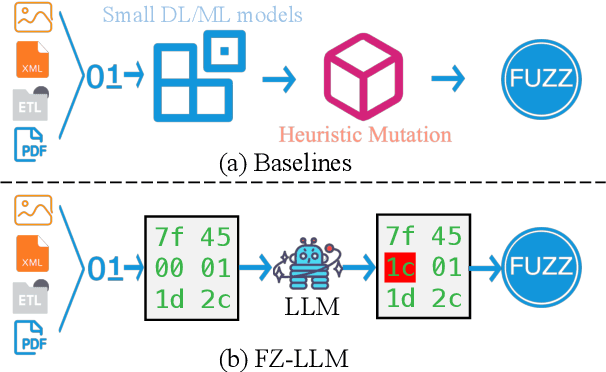
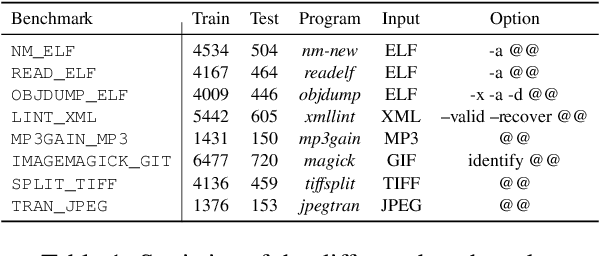
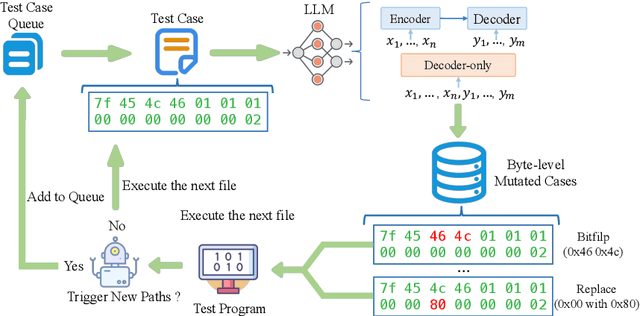
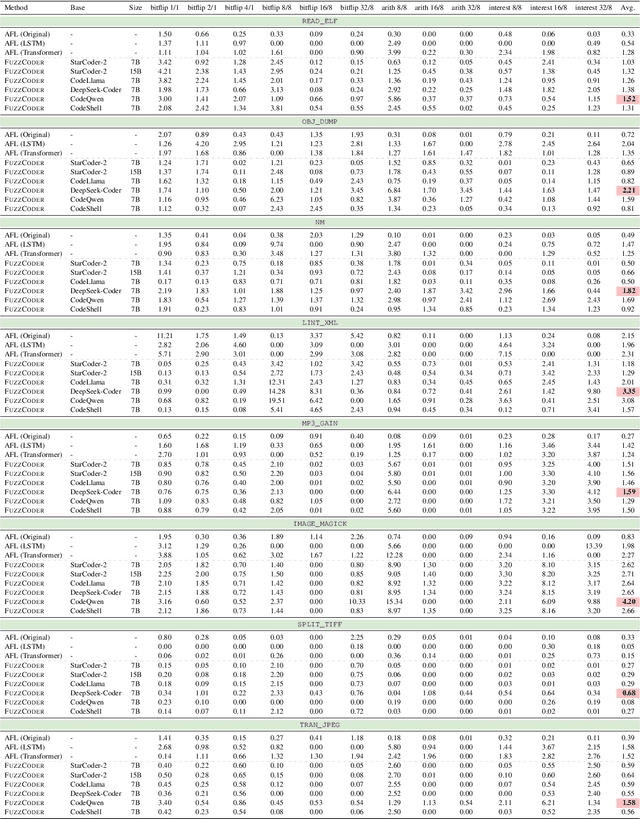
Abstract:Fuzzing is an important dynamic program analysis technique designed for finding vulnerabilities in complex software. Fuzzing involves presenting a target program with crafted malicious input to cause crashes, buffer overflows, memory errors, and exceptions. Crafting malicious inputs in an efficient manner is a difficult open problem and the best approaches often apply uniform random mutations to pre-existing valid inputs. In this work, we propose to adopt fine-tuned large language models (FuzzCoder) to learn patterns in the input files from successful attacks to guide future fuzzing explorations. Specifically, we develop a framework to leverage the code LLMs to guide the mutation process of inputs in fuzzing. The mutation process is formulated as the sequence-to-sequence modeling, where LLM receives a sequence of bytes and then outputs the mutated byte sequence. FuzzCoder is fine-tuned on the created instruction dataset (Fuzz-Instruct), where the successful fuzzing history is collected from the heuristic fuzzing tool. FuzzCoder can predict mutation locations and strategies locations in input files to trigger abnormal behaviors of the program. Experimental results show that FuzzCoder based on AFL (American Fuzzy Lop) gain significant improvements in terms of effective proportion of mutation (EPM) and number of crashes (NC) for various input formats including ELF, JPG, MP3, and XML.
 Add to Chrome
Add to Chrome Add to Firefox
Add to Firefox Add to Edge
Add to Edge